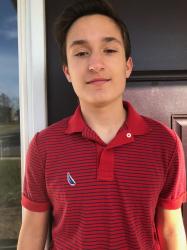The NBA’s minor league team finally has a chance to show its stuff.
American icon Benjamin Franklin once said: “Without continual growth and progress, such words as improvement, achievement, and success have no meaning.” That phrase applies to the NBA’s minor league organization, the G-League.
Founded in 2001 and once called Developmental League, the G-League has made strides over the past decade and a half. And this year will be the year when the league’s development will pay dividends.
Helping the cause are two-way contracts between the NBA and the G-League. That arrangement increases fan interest as NBA fans pay more attention to what’s happening ‘down on the farm.’
There’s more, too. Here are the three reasons why I think the G-League is ready to take off.
New Markets
Over the past three years, ten new teams have been added to the G-League’s roster. This off-season, the Washington Wizards’ affiliate–the Capital City Go-Go–came on board.
The expanded league now includes 27 teams. Only the Denver Nuggets, New Orleans Pelicans, and Portland Trail Blazers are without a direct G-League affiliate. But, luckily for them, the league allows those teams to assign players to other G-League teams.

G League Teams (photo, http://dnaobb.blogspot.com)
The expansion means cities, like Portland, Maine, and Des Moines, Iowa, have pro sports team in the area. It also brings new NBA fans into the fold. It’s a win-win situation.
Rules Changes
Another aspect of interest is that experimental NBA rules are being tried out in the G-League. The experimentation adds fan intrigue and gives players, coaches, referees, and leagues a chance to evaluate possibilities.
Rules changes, including a 14-second clock after offensive rebounds (as opposed to the typical 24) and eliminating the difference between a regular and 30-second timeout, have been tried in the G-League before being implemented in the NBA.
Talent Level
Finally, there’s more talent than ever before in the G-League. The NCAA’s “One-and-Done” rule enables the G-League to grab players they otherwise would not be on their rosters. That means more young talent gets to play in the G-League, guys like Robert Covington of the 76ers and Seth Curry of the Trail Blazers.
The G-League also helps coaches. The Toronto Raptors new head coach, Nick Nurse, coached in the G-League from 2007-13. Nurse gained a reputation and became an attractive alternative for the Raptors.
From my point of view, expansion, rules experimentation, and new talent are just three reasons why the G-League will flourish. You’ll be hearing more than ever before about the league, players, and coaches.
Mark my words!














